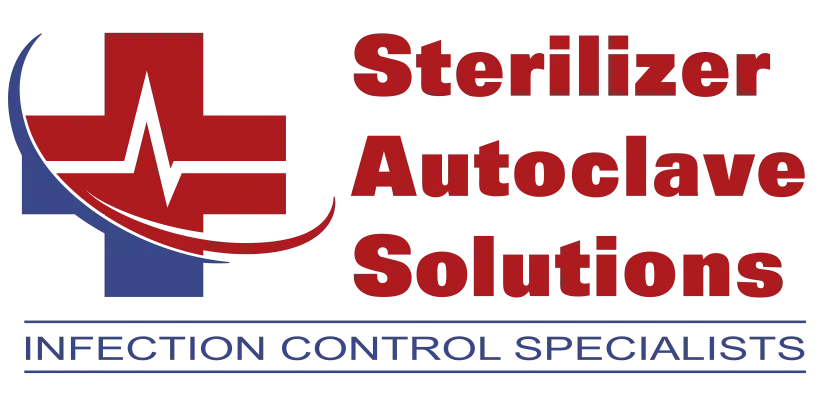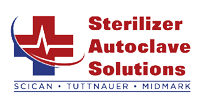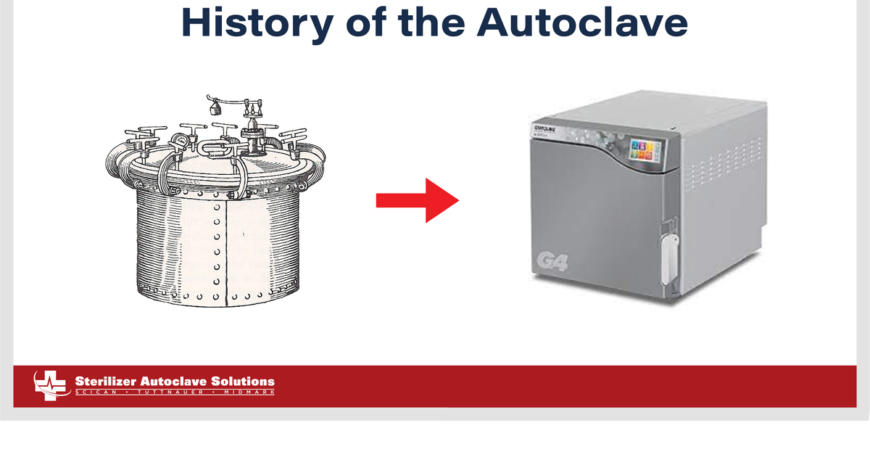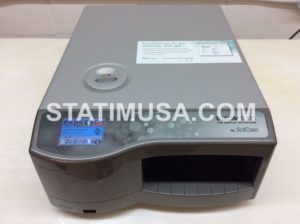The History of the Autoclave
The technology of the medical industry is ever-evolving day by day and is only getting better. Although most things nowadays are built for convenience or ease-of-use. Especially the autoclaves. Let the machine do the hard work for you, and you’re not stressing about it. Sometimes it’s as easy as setting the program you want it to run and coming back in half an hour just to check that it hasn’t gotten up and left. But that gradual evolution in easy access didn’t just come from the first draft. There’s a lot of trial and error done over time through iterations of new versions that improve upon its predecessors. We’ve always talked about when a new autoclave gets an update or how something new compares to what came before it. But in doing so, we’ve never looked at what came before everything we show you today, namely the first autoclave.
And now we’d like to change that. As this article is going to be about the history of the autoclaves themselves. Who invented them and why, and just how long they’ve been around. Here’s a hint, it’s much longer than even WE thought. The concept of sterilization though is something else entirely, that we plan on covering in the future as well. For now we’ll be talking about just the autoclaves themselves. Early designs of what was considered the first “steam sterilizers” and anything that can tell us about how we got to where we are today.
The Start of It All
Before we talk about the autoclave, there is one thing we’d like to briefly touch on. Without sterilization as a whole, there would be no need for the autoclave. So, we’d like to briefly mention a couple facts just about sterilization that led into the autoclave era.
For one, sterilization and disinfection as a whole has been around since about 3,000 B.C. At this time, Egyptians used pitch and tar with aromatics to embalm bodies with such skill that they’re still around today. All the way to 130-220 A.D. Where Greek authority in medicine, Galen, got said authority through his findings. And he found results in boiling the instruments he used to treat wounded soldiers. But there was a time period after around 900 A.D. where disease was rampant, and towns were ravaged by the plague. Progress was at a standstill in terms of sterilization. So while this is a very summarized version, this was to show you how long the practice of sterilization has been around.
The next step in progress wouldn’t be until the time of the Renaissance. This would be where our first instances of microorganism detection and superheated steam machines. Not in that order chronologically, because what we got first isn’t actually the first instance of what we know as the autoclave.
The Renaissance
The Renaissance gave us two of the most important inventions related to our topic today. The pressure cooker which used pressurized chambers and steam penetration to cook food. And on the other end, the microscope, for the detection of microorganisms. These in turn would become the necessary steps to understand what it is you’re sterilizing, and what you’d be sterilizing it with.
The “Digester”
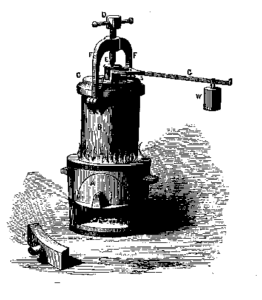
First, let’s go back to 1680. While we don’t quite have the autoclave for medical purposes, this is when superheated cooking came about. In the form of the pressure cooker. French physicist Denis Papin is the one we’re after. He invented a chambered pressure cooking device that can create a tight seal between the pot and lid. Known only as the “Digester,” this device trapped hot air in the chamber and it causes it to expand. But because the air is trapped, as it would expand, pressure would form. And this pressure also increased the boiling point of the water inside. And this superheated steam would penetrate whatever food item would be put in it, effectively cooking it.
This was the first instance of steam penetration by way of a superheated pressurized chamber. But it wouldn’t be until a bit later on that the idea of using this method for steam sterilization came about. So we have the pressurized steam chamber. Now we’ll move on to how they detected the microorganisms in the first place.
The Microscope
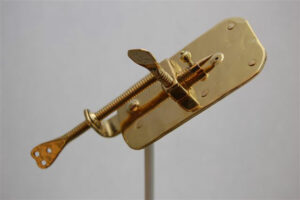
This would come 3 years later, in 1683, at the hands of Antoni van Leeuwenhoek. Antoni was a Dutch linen draper and scientist who was the first to make a REAL microscope. Many had tried before, but none were completely successful in making a true scientific magnifier. Most iterations before were just novelty or something of that nature. He found the way to make superior lenses by grinding a glass ball, and got farther than others. Everyone else would hope to achieve just 50x magnification on a good day. But Antoni managed to make the first practical microscopic device with a magnification of 270x. It was simple, sure, just a convex lens on a handheld metal plate that was adjusted with screws. But Antoni was a pioneer for microscopy and the future of research at a level that the human eye couldn’t achieve alone.
The First Autoclave
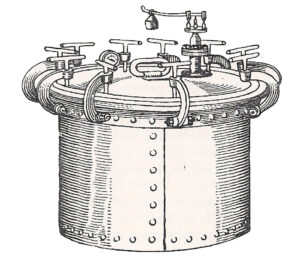
After the last advancement we talked about, being the 1683 microscope, it’s time to jump ahead once again. This time, we’re going to the year the first actual autoclave for sterilization was created, 1876. Sterilization as a whole had evolved in high points from the previously discussed year of 1683 to 1876. Things like the invention of canning for food preservation, germ theory, etc. So now we’ve gotten to the point where sterilization has evolved to the point of new methods to combat bacteria. Things like the first instance of carbolic acid spray to use on the hands of operators and the wounds of patients in 1867. And of course, the first autoclave.
The first actual autoclave was created by Charles Chamberland in 1876. Chamberland was a collaborator and pupil of Louis Pasteur, who invented the process of pasteurization back in 1862. Chamberlin had created the first pressure steam sterilizer, and patented it after Denis Papin’s “Digester.” The autoclave itself was, just like the microscope brought about by Leeuwenhoek, the first practical machine of its kind. While it was inspired by what came before, Chamberland’s autoclave paved the way for what we know as an autoclave today. And the autoclave’s design has only gotten more varied and unique as companies started jumping at the chance to make their own. Some of which we still talk about today.
The Companies We Know Today
The history of the autoclave isn’t quite as extensive as other things. But it’s a combination of all the details that accumulate and show an evolution in sterilization as a whole. The autoclave was just one big step in that. With the invention of the autoclave, the realization that pressurized steam can help eliminate bacteria was a game changer. Just like the microscope, there were times where it wasn’t perfect until someone came along and made a proper one. But once it was found that it could be done, there was nowhere else to go but up. Fast forward years later and some of the office names in autoclave technology started popping up. For example…
Tuttnauer
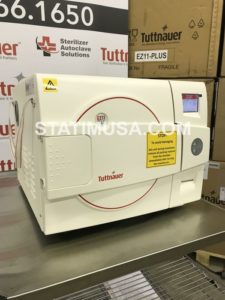
Did you know that Tuttnauer got its start all the way back in 1925? Well now you have something new to tell your friends. They started making autoclaves in 1925 for the British army if you can believe that. And they kept creating more and more autoclaves for many different uses. Then in 1987, they started exporting them to the USA. Since then, they’ve made a name as one of the top authorities in laboratory autoclaves from hospitals and pet care facilities to prestigious universities. And with the largest autoclave manufacturing plant in the world with over 325,000 square feet to work with, you can see that they’ve definitely come pretty far.
You can check out what Tuttnauer has to offer through our site here.
Scican / Coltene
Scican / Coltene is another huge name in the game, and they’ve gotten in some time too. They’ve been producing autoclaves since back in 1989, when they introduced the first Statim Cassette Autoclave. And they were good. Autoclaves around that time took about 45 minutes to sterilize, but Statim could do it in 6. Now back then the speed wasn’t necessarily a problem. That is until the incident that Statim said increased demand for faster autoclaves.
See, in 1992 a story aired on a big news show. The story was about how a dentist managed to transmit the AIDS virus through an infected instrument to 5 people. And they say that because of this, dentists realized that sterilization of instruments between patients was paramount. So they needed something that can get that job done in the time between patients, so it had to be fast. And Scican / Coltene gave them somewhere to look.
You can check out what Scican / Coltene has to offer through our site here.
Midmark
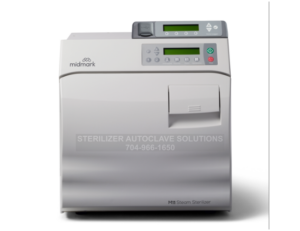
Another staple name to us for awhile here has been Midmark. Midmark has had quite the extensive history, going as far back as 1915 in Minster, Ohio. The actual scientific ventures for Midmark didn’t come in until 1950. From 1915 to 1949, Midmark was actually started under the name of the Cummings Machine Company, and they originally manufactured concrete mixers. Then after the business acquisition of a company called Reeves Pulley Company in 1920, they started building locomotives. In 1921, the company was taken over by one John W. Eiting, and 4 years later he became the president of the newly named Industrial Equipment Company.
Fast forward to the 1960’s and the company had been expanding and bringing in millions. John’s son, Carl F. Eiting had taken hold and led the company into its 50th year. And Carl’s son, James A. Eiting, believed they needed to pool their resources and capabilities into a specific market. So they purchased blueprints and machines from a bankrupt company and got to working in the medical industry. And now the company had once again been renamed to the IE Industries. Their medical division had grown more and more, and they needed more space to work. So in Janurary of 1969, James opted to move the company to Versailles, Ohio under it’s new name, Midmark.
And more and more kept happening to the now-named Midmark from then on. In the later 80’s, they purchased their competitor Ritter, and opened their lodge accommodation center for visitors and customers in Versailles called Riverwatch. And the company even celebrated its 75th anniversary. In the 90’s, they purchased Knight manufacturing, allowing them to branch into the dental market. And from the 2000’s to now, they’ve seen nothing but success as their rise to the household name you see everywhere in the medical industry today. And with offices in places like France, India, the United Kingdom and Italy, they’ve got global reach that comes with 100 years worth of hard work and experience.
You can check out what Midmark has to offer through our site here.
Enbio
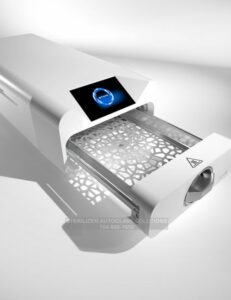
There’s not much known about the history of Enbio, but they’ve been around for around 30 years. They’ve come swinging through 3 decades with experience in biotechnology and industrial hydroponics. They’re a Swiss manufacturing company where everything is made in-house by their team of structural engineers, software programmers and industrial designers. And they’ve been picking up an ever-expanding network of places around the world. A network expanding to Europe, the Middle East and the United States grabbing them a total annual turnover exceeding 200 million Euro. And with their U.S. expansion, we had the pleasure of being their first authorized warranty, repair and service center.
You can check out what Enbio has to offer through our site here.
Final Thoughts
The autoclave has had quite a bit of history to get to where we are today with them. The first idea of steam penetration and superheated pressure chambers coming from a pressure cooker. Add on the fact that people realized boiling water and steam can kill bacteria, so they started using that. The evolution of methods to sterilize important materials over the decades leading to the first practical autoclave. Sometimes it’s worth it to go back and learn about how things change like that. And it’s especially fascinating to learn the come-up stories of some household names. Tuttnauer and Statim have had their fair share of history. And what they share with everyone may not even be the half of it.
There’s been decades of research and work put into the mastery of what makes an autoclave one of the best methods of sterilization we have available to us today. And we’re always happy to educate anyone who want’s to know anything about what we specialize in.
As always if you have any questions about this process or anything else please feel free to contact us and take advantage of our “FREE TECH SUPPORT.”
We also offer FREE VIRTUAL TECH SUPPORT to “See and Talk” with a “Real Time Live Technician” for any problems you may be in need of help with.
You can also use our “FREE MAINTENANCE PROGRAM”. Take the guesswork and worrying about what unit is due for maintenance and which maintenance cycle it is time for. We will keep track of all your autoclaves and let you know when it’s time for anything.
